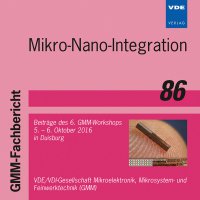Low temperature catalytic combustible hydrogen MEMS gas sensor enhanced by Si-Pt nanostructures
Conference: Mikro-Nano-Integration - 6. GMM-Workshop
10/05/2016 - 10/06/2016 at Duisburg, Deutschland
Proceedings: Mikro-Nano-Integration
Pages: 4Language: englishTyp: PDF
Personal VDE Members are entitled to a 10% discount on this title
Authors:
Mueller, Lutz; Hoffmann, Martin (TU Ilmenau, Micromechanical Systems Group, Ilmenau, 98693, Germany)
Maier, Konrad; Helwig, Andreas; Müller, Gerhard (Airbus Group Innovations, München, 81663, Germany)
Abstract:
A catalytic combustible hydrogen MEMS gas sensor is presented. It’s based on a suspended and heated silicon membrane. With integrated platinum nanostructures the peak value of the sensitivity is reached at only 100 °C surface temperature. The self-organized growing of the platinum nanostructures appears during the vapour deposition of platinum onto the especially structured silicon surface, which is called “silicon grass”. For conventional MEMS hydrogen sensors an additional application of the catalytic structure or material is usually needed. In contrast, the presented sensor can be fabricated using thin-film technology, only. Even without a differential measurement setup the limit for H2 detection is only 200 ppm H2 in air. At high H2 concentrations (20,000 ppm) the sensitivity could be raised from 11 % at 500 °C (for the sensor without nanostructures) to 68 % at 100 °C (for the sensor with nanostructures).


